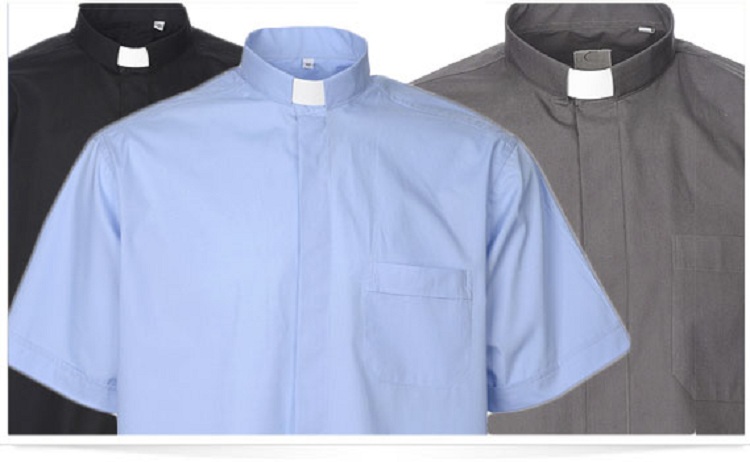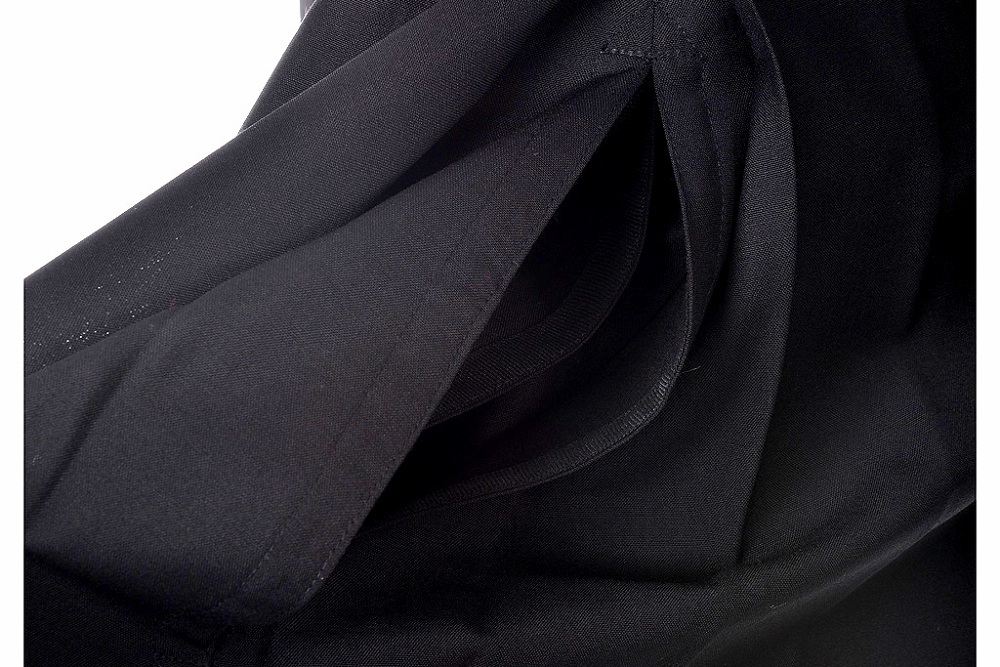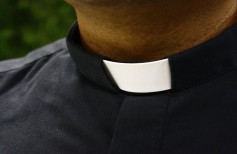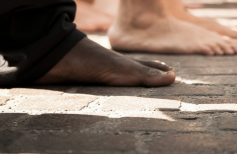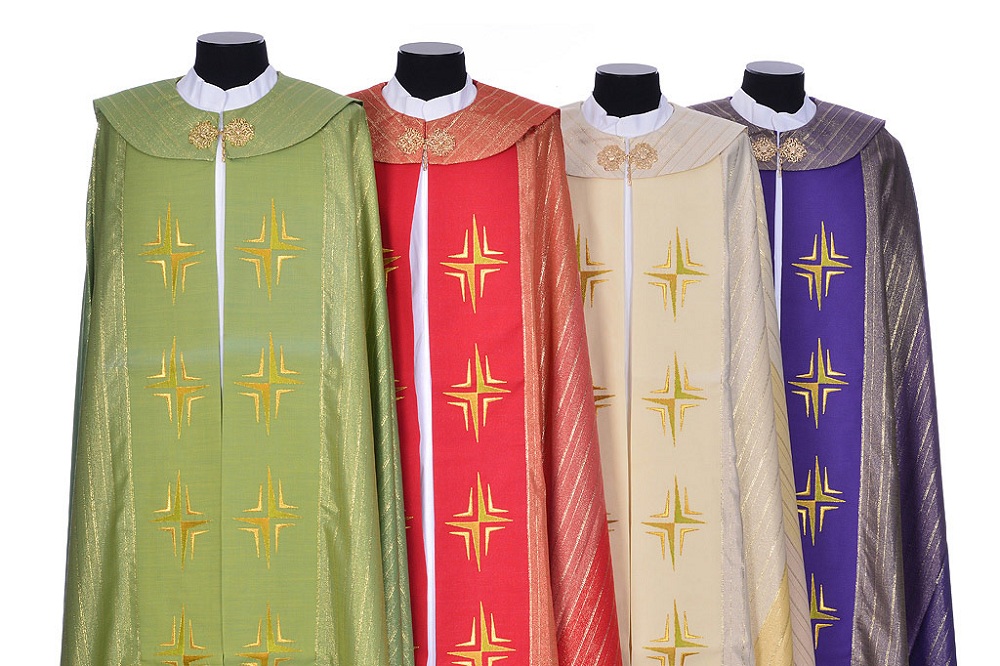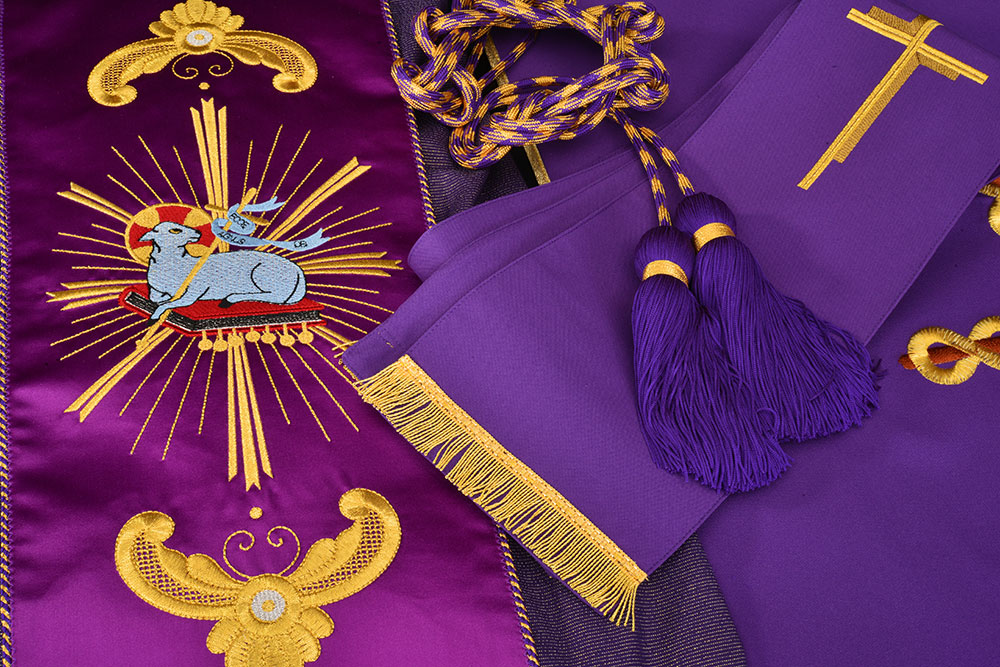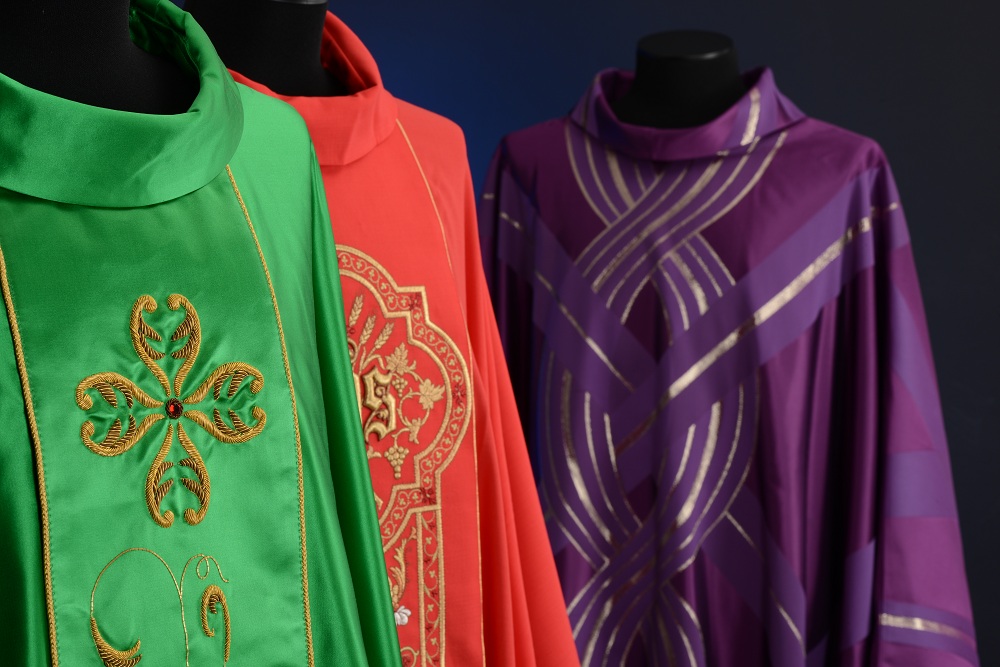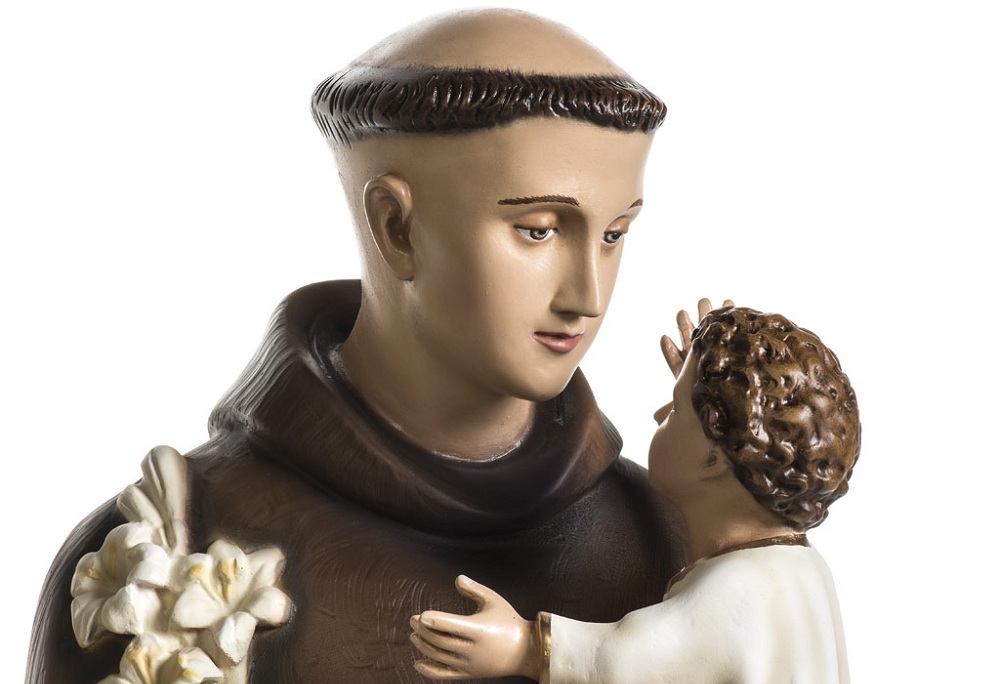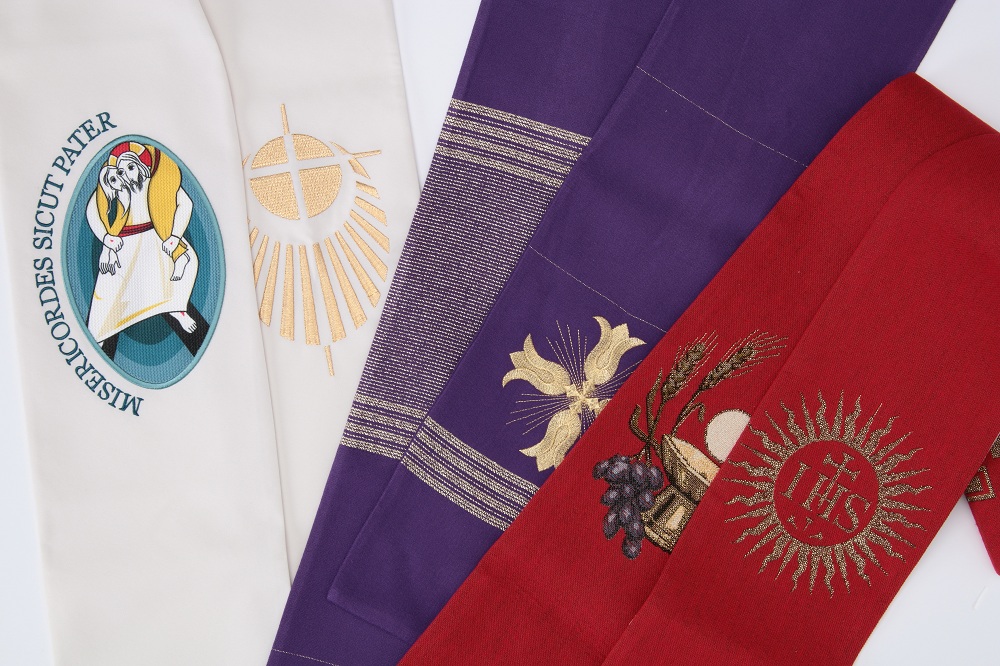With the term clergy we generally define the religious suits consisting of trousers, shirt and black or gray jacket, worn by priests outside of the celebrations. More in particular, however, the definition is referred to the typical clergy shirt, which characterizes unequivocally this attire.
The most immediate and known detail of clergy shirts is the white collar, which can be of two models.
The first model is called “Roman“: the collar is a white plastic strap of 3/4 cm high, emerging half a centimeter from the black collar. This model comes from the cassock, in which the white band symbolizes innocence and purity.
In the second model, a simple white plastic insert is threaded into the collar of the shirt, specifically adapted to this purpose, with the two slots in which the corners are inserted. This way, we get the characteristic white square in the middle of the collar.
The clergy shirts are made usually in fil-à-fil, popeline or mixed. They can be long or short sleeves, depending on the season. The recurring and popular colors are dark gray, light gray, blue, white, black.
The clergyman suits derives from Anglo-Saxon Protestant pastors clothing, but Roman Catholicism has appreciated the convenience and comfort, and has welcomed and accepted it as a religious suit and symbol of the Catholic identity.
Clergy shirts identify the priest, even informally. They remind him and the other of his membership, the décor, the commitment. They fulfill with sobriety and dignity his spirit. Historically, humankind has felt the need to identify with specific suits the roles and tasks of the community members. Clergy shirts are for the priest a sort of manifesto of awareness towards his obligations, his duties, his responsibilities, as well as a reassuring message to the faithful.

